-
 Bitcoin
Bitcoin $115200
0.74% -
 Ethereum
Ethereum $3730
6.71% -
 XRP
XRP $3.075
4.85% -
 Tether USDt
Tether USDt $1.000
0.01% -
 BNB
BNB $766.1
1.85% -
 Solana
Solana $168.7
4.22% -
 USDC
USDC $0.9999
0.00% -
 Dogecoin
Dogecoin $0.2097
5.42% -
 TRON
TRON $0.3327
1.72% -
 Cardano
Cardano $0.7547
4.04% -
 Stellar
Stellar $0.4156
4.83% -
 Hyperliquid
Hyperliquid $38.77
1.37% -
 Sui
Sui $3.589
4.15% -
 Chainlink
Chainlink $17.09
4.86% -
 Bitcoin Cash
Bitcoin Cash $574.6
5.82% -
 Hedera
Hedera $0.2523
1.95% -
 Avalanche
Avalanche $23.01
7.68% -
 Ethena USDe
Ethena USDe $1.001
-0.02% -
 Litecoin
Litecoin $120.4
9.83% -
 Toncoin
Toncoin $3.426
-4.06% -
 UNUS SED LEO
UNUS SED LEO $8.918
-0.53% -
 Shiba Inu
Shiba Inu $0.00001250
2.49% -
 Uniswap
Uniswap $9.956
8.52% -
 Polkadot
Polkadot $3.724
3.26% -
 Monero
Monero $304.7
0.19% -
 Dai
Dai $0.9999
-0.01% -
 Bitget Token
Bitget Token $4.394
1.48% -
 Cronos
Cronos $0.1400
6.96% -
 Pepe
Pepe $0.00001076
2.83% -
 Aave
Aave $268.4
3.45%
Does NFT support cross-chain transactions?
Despite technical hurdles like differing blockchain architectures, innovative solutions like bridges and wrapped NFTs are advancing cross-chain NFT transactions, though security remains a crucial concern.
Mar 01, 2025 at 03:48 am
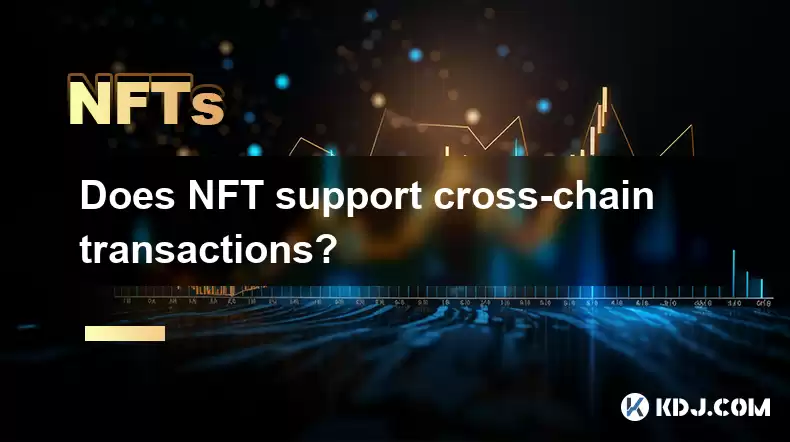
Does NFT Support Cross-Chain Transactions? A Deep Dive into Interoperability
Key Points:
- The Current State of NFT Cross-Chain Transactions: While not fully seamless, significant progress is being made towards enabling cross-chain NFT transfers. Various methods exist, each with its own strengths and limitations.
- Technical Challenges: Differences in blockchain architecture, consensus mechanisms, and security protocols pose significant hurdles to achieving true cross-chain NFT interoperability.
- Solutions and Technologies: Several innovative solutions, including bridges, wrapped NFTs, and layer-2 scaling solutions, are actively being developed and implemented to facilitate cross-chain NFT transfers.
- Security Concerns: The security of cross-chain NFT transactions is paramount, and vulnerabilities in bridges and other intermediary technologies pose a significant risk.
- Future Outlook: The future of NFT cross-chain transactions is bright, with ongoing development and adoption promising a more interconnected and accessible NFT ecosystem.
- Understanding the Limitations of Current NFT Functionality:
Most NFTs currently reside on a single blockchain. This means an NFT minted on Ethereum, for example, cannot be directly transferred to another blockchain like Solana or Polygon without employing specific mechanisms. This limitation stems from the fundamental differences in how each blockchain operates. Each blockchain has its unique architecture, data structures, and consensus mechanisms. This inherent heterogeneity makes direct transfer of data, including the complex metadata associated with NFTs, incredibly challenging. For instance, Ethereum uses a proof-of-stake consensus mechanism, while Solana employs a proof-of-history mechanism. These differences impact how transactions are validated and added to the blockchain, making direct transfer incompatible. Further complicating matters are variations in programming languages used for smart contracts. Ethereum primarily uses Solidity, while Solana utilizes Rust. This difference in smart contract languages necessitates the creation of bridges or intermediary solutions that can translate between these different environments. The metadata associated with an NFT, including its image, animation, and other attributes, also needs to be handled carefully during the transfer process to ensure that the NFT retains its integrity and value after it has been moved to a different blockchain. This involves not just transferring the token ID but also ensuring the accurate and secure transfer of all the associated metadata. The size and complexity of the metadata can also pose challenges in cross-chain transfers, especially when dealing with large files or complex data structures. The lack of standardized NFT metadata formats further exacerbates this issue.
- Technical Challenges in Achieving Seamless Cross-Chain NFT Transfers:
The technical challenges in achieving seamless cross-chain NFT transfers are numerous and complex. Firstly, each blockchain operates independently with its own unique security protocols and validation mechanisms. Integrating these disparate systems requires careful consideration of security risks and vulnerabilities. A poorly designed cross-chain bridge, for example, could be exploited by malicious actors to steal NFTs or disrupt the transfer process. Secondly, the scalability of different blockchains varies significantly. Transferring NFTs from a high-throughput blockchain like Solana to a slower blockchain like Ethereum could lead to delays and increased transaction fees. Thirdly, the lack of standardization in NFT metadata formats presents a significant challenge. Different blockchains might use different formats to store NFT metadata, requiring conversion and potential loss of information during the transfer process. Fourthly, the complexity of smart contract interactions across different blockchains adds another layer of difficulty. Ensuring the proper execution of smart contracts on both the source and destination blockchains requires sophisticated programming and rigorous testing to avoid errors and security vulnerabilities. Finally, regulatory compliance in different jurisdictions adds another layer of complexity. The legal landscape surrounding NFTs and cross-chain transactions is still evolving, and navigating these complexities requires careful legal consideration. Ensuring that cross-chain NFT transfers comply with relevant regulations in different jurisdictions is crucial for the long-term sustainability of the technology.
- Exploring Solutions: Bridges, Wrapped NFTs, and Layer-2 Scaling:
Several promising solutions are emerging to address the challenges of cross-chain NFT transactions. One popular approach is the use of bridges. Bridges act as intermediaries, facilitating the transfer of NFTs between different blockchains. They typically involve locking the NFT on the source blockchain and minting a corresponding token representing the NFT on the destination blockchain. However, bridges are not without their risks, as they represent a potential point of failure and are vulnerable to hacks and exploits. Another approach is the use of wrapped NFTs. This involves creating a token on a new blockchain that represents the ownership of an NFT on another blockchain. This allows users to trade and interact with the NFT on the new blockchain without actually transferring the underlying NFT itself. However, this approach requires trust in the wrapping mechanism and the entity responsible for managing it. Layer-2 scaling solutions offer another potential solution. By offloading transactions from the main blockchain to a layer-2 network, they can improve the speed and efficiency of NFT transfers, potentially reducing the need for cross-chain bridges. However, the adoption of layer-2 solutions is still relatively limited, and their scalability and security remain subject to ongoing development and refinement. Furthermore, the integration of layer-2 solutions with different blockchains needs to be carefully considered to ensure interoperability and avoid fragmentation of the NFT ecosystem. Each of these solutions presents its own set of advantages and disadvantages, and the optimal approach will likely vary depending on the specific needs and requirements of the user and the NFT in question.
- Security Considerations and Mitigation Strategies:
Security is paramount in cross-chain NFT transactions. The inherent complexity of these transactions introduces various vulnerabilities that malicious actors can exploit. One major security risk is the vulnerability of bridges. Bridges often require users to lock their NFTs on one blockchain before receiving a corresponding token on another. This process can be susceptible to hacks or exploits, potentially resulting in the loss of NFTs. Another concern is the security of wrapped NFTs. If the entity managing the wrapping process is compromised, it could lead to the loss or theft of NFTs. To mitigate these risks, robust security measures are crucial. This includes thorough audits of bridge and wrapping mechanisms, implementation of multi-signature wallets, and the use of decentralized autonomous organizations (DAOs) to govern the process. Furthermore, continuous monitoring for vulnerabilities and prompt patching of any discovered flaws are essential. The use of advanced cryptographic techniques and security protocols can also enhance the security of cross-chain NFT transactions. Education and awareness among users are also vital to mitigate risks. Users should be aware of the potential security risks involved in cross-chain transactions and should only use reputable and well-audited platforms and services. Thorough due diligence is crucial before engaging in any cross-chain NFT transfer.
- The Future of Cross-Chain NFT Transactions and Interoperability:
The future of cross-chain NFT transactions is promising, with ongoing development and innovation pushing the boundaries of interoperability. Several initiatives are focused on improving the security, scalability, and ease of use of cross-chain NFT transfers. The development of standardized NFT metadata formats will simplify the process and reduce the risk of information loss during transfers. Improvements in bridge technology will make these intermediaries more secure and efficient. The wider adoption of layer-2 scaling solutions will also contribute to faster and cheaper cross-chain transactions. Furthermore, the development of new consensus mechanisms and blockchain architectures specifically designed for interoperability will further enhance the seamlessness of NFT transfers. The growing collaboration between different blockchain projects and developers will also accelerate progress in this area. As the NFT ecosystem continues to mature, cross-chain interoperability will become increasingly important, facilitating a more interconnected and accessible NFT marketplace. This will open up new opportunities for creators, collectors, and developers, leading to a more vibrant and dynamic NFT ecosystem. However, challenges remain, and ongoing efforts are needed to address the security concerns and technical complexities involved in achieving seamless cross-chain NFT interoperability.
FAQs:
Q: What are the risks associated with cross-chain NFT transactions?
A: The primary risks include the vulnerability of bridges to hacking and exploits, the potential for loss of NFTs due to errors or security breaches in the transfer process, and the lack of standardization which can lead to data loss or corruption during transfers. There's also the risk of interacting with untrusted or poorly audited services.
Q: How can I ensure the security of my NFTs during a cross-chain transaction?
A: Only use reputable and well-audited bridges and platforms. Thoroughly research the platform before transferring your NFTs. Consider using multi-signature wallets to add an extra layer of security. Keep your private keys safe and secure. Be cautious of phishing scams and other social engineering attacks.
Q: What is a wrapped NFT, and how does it work?
A: A wrapped NFT is a token on a new blockchain that represents the ownership of an NFT on another blockchain. It's like a receipt or IOU for your original NFT. The process typically involves locking the original NFT on its native blockchain and then minting a corresponding wrapped NFT on the target blockchain. This allows you to trade and use the NFT on the new blockchain without actually moving the original NFT.
Q: What is a cross-chain bridge, and how does it work?
A: A cross-chain bridge is a technology that facilitates the transfer of assets, including NFTs, between different blockchains. It works by locking the NFT on the source blockchain and then minting a corresponding token representing the NFT on the destination blockchain. The bridge acts as an intermediary, ensuring that the transfer is secure and reliable. Different bridges use different mechanisms, some relying on trusted validators, while others utilize decentralized protocols.
Q: Are all cross-chain NFT transactions equally secure?
A: No, the security of cross-chain NFT transactions varies significantly depending on the specific bridge or technology used. Some bridges are more secure and well-audited than others. It's crucial to research and select a reputable and secure bridge before transferring your NFTs. The level of decentralization and the robustness of the security mechanisms employed also play a significant role in the overall security of the transaction.
Disclaimer:info@kdj.com
The information provided is not trading advice. kdj.com does not assume any responsibility for any investments made based on the information provided in this article. Cryptocurrencies are highly volatile and it is highly recommended that you invest with caution after thorough research!
If you believe that the content used on this website infringes your copyright, please contact us immediately (info@kdj.com) and we will delete it promptly.
- Cryptocurrency, Altcoins, and Profit Potential: Navigating the Wild West
- 2025-08-04 14:50:11
- Blue Gold & Crypto: Investing Disruption in Precious Metals
- 2025-08-04 14:30:11
- Japan, Metaplanet, and Bitcoin Acquisition: A New Era of Corporate Treasury?
- 2025-08-04 14:30:11
- Coinbase's Buy Rating & Bitcoin's Bold Future: A Canaccord Genuity Perspective
- 2025-08-04 14:50:11
- Coinbase's Buy Rating Maintained by Rosenblatt Securities: A Deep Dive
- 2025-08-04 14:55:11
- Cryptos, Strategic Choices, High Returns: Navigating the Meme Coin Mania
- 2025-08-04 14:55:11
Related knowledge
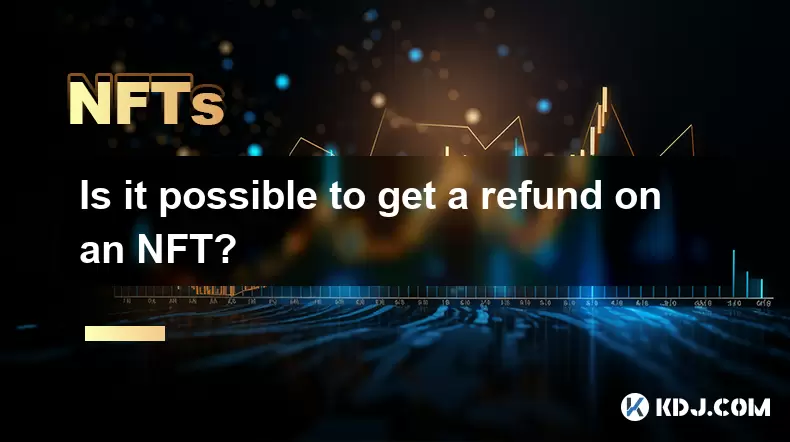
Is it possible to get a refund on an NFT?
Jul 21,2025 at 08:35pm
Understanding NFT Transactions and RefundsWhen you purchase an NFT (Non-Fungible Token), the transaction is typically recorded on a blockchain, making...
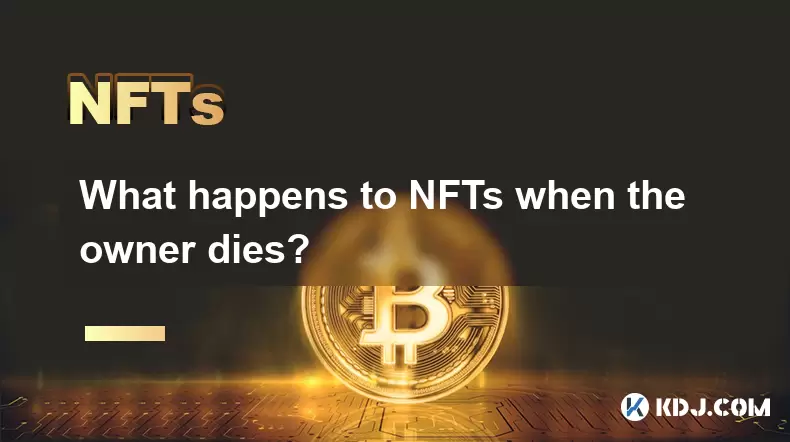
What happens to NFTs when the owner dies?
Jul 22,2025 at 02:43pm
Legal Ownership and Digital AssetsWhen an individual owns NFTs, the question of what happens to these assets upon their death is a pressing one. NFTs ...
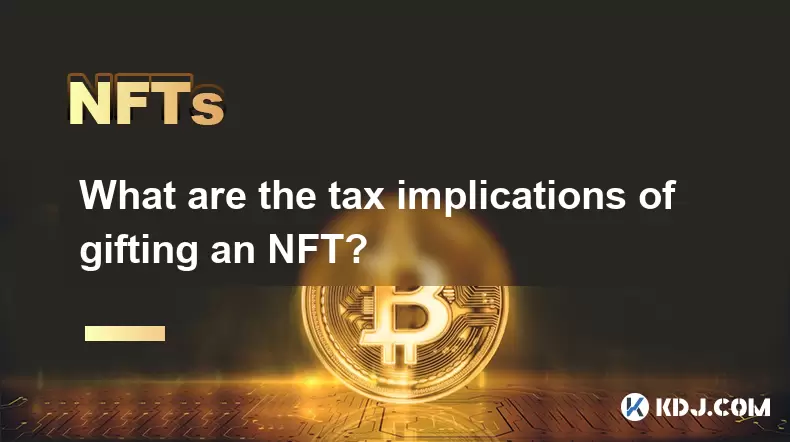
What are the tax implications of gifting an NFT?
Jul 19,2025 at 04:21am
Understanding the Basics of NFT GiftingGifting a Non-Fungible Token (NFT) involves transferring ownership from one individual to another without recei...
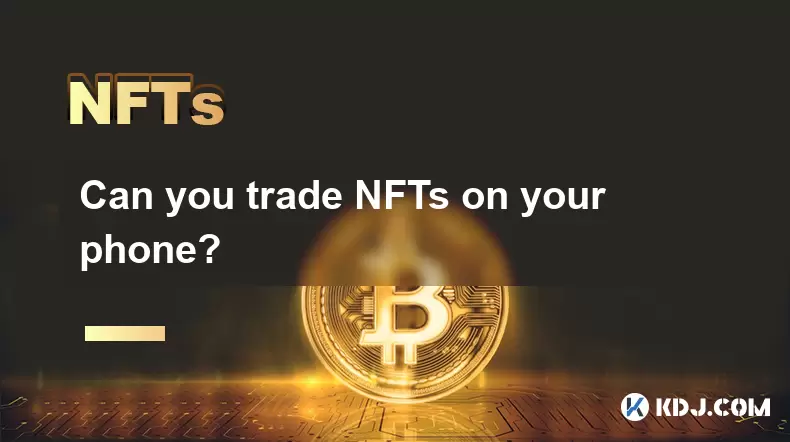
Can you trade NFTs on your phone?
Jul 18,2025 at 04:29am
Trading NFTs on Mobile DevicesYes, you can trade NFTs on your phone, and the process has become increasingly streamlined thanks to a variety of mobile...
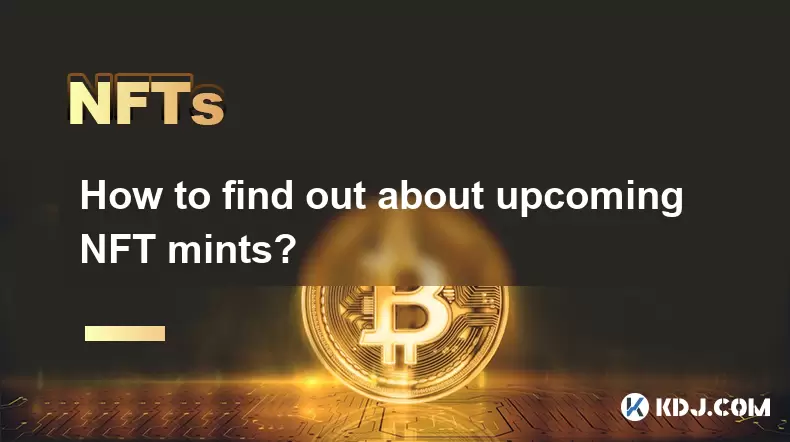
How to find out about upcoming NFT mints?
Jul 18,2025 at 11:50am
Exploring NFT Minting OpportunitiesUnderstanding the landscape of upcoming NFT mints is crucial for collectors, investors, and creators who wish to st...
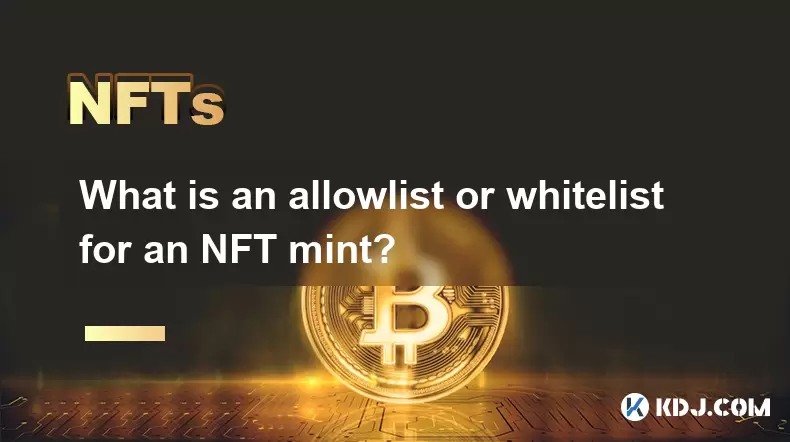
What is an allowlist or whitelist for an NFT mint?
Jul 20,2025 at 07:14pm
Understanding the Concept of an Allowlist for NFT MintingAn allowlist, also commonly referred to as a whitelist, is a mechanism used in the NFT mintin...

Is it possible to get a refund on an NFT?
Jul 21,2025 at 08:35pm
Understanding NFT Transactions and RefundsWhen you purchase an NFT (Non-Fungible Token), the transaction is typically recorded on a blockchain, making...

What happens to NFTs when the owner dies?
Jul 22,2025 at 02:43pm
Legal Ownership and Digital AssetsWhen an individual owns NFTs, the question of what happens to these assets upon their death is a pressing one. NFTs ...

What are the tax implications of gifting an NFT?
Jul 19,2025 at 04:21am
Understanding the Basics of NFT GiftingGifting a Non-Fungible Token (NFT) involves transferring ownership from one individual to another without recei...

Can you trade NFTs on your phone?
Jul 18,2025 at 04:29am
Trading NFTs on Mobile DevicesYes, you can trade NFTs on your phone, and the process has become increasingly streamlined thanks to a variety of mobile...

How to find out about upcoming NFT mints?
Jul 18,2025 at 11:50am
Exploring NFT Minting OpportunitiesUnderstanding the landscape of upcoming NFT mints is crucial for collectors, investors, and creators who wish to st...

What is an allowlist or whitelist for an NFT mint?
Jul 20,2025 at 07:14pm
Understanding the Concept of an Allowlist for NFT MintingAn allowlist, also commonly referred to as a whitelist, is a mechanism used in the NFT mintin...
See all articles

























































































